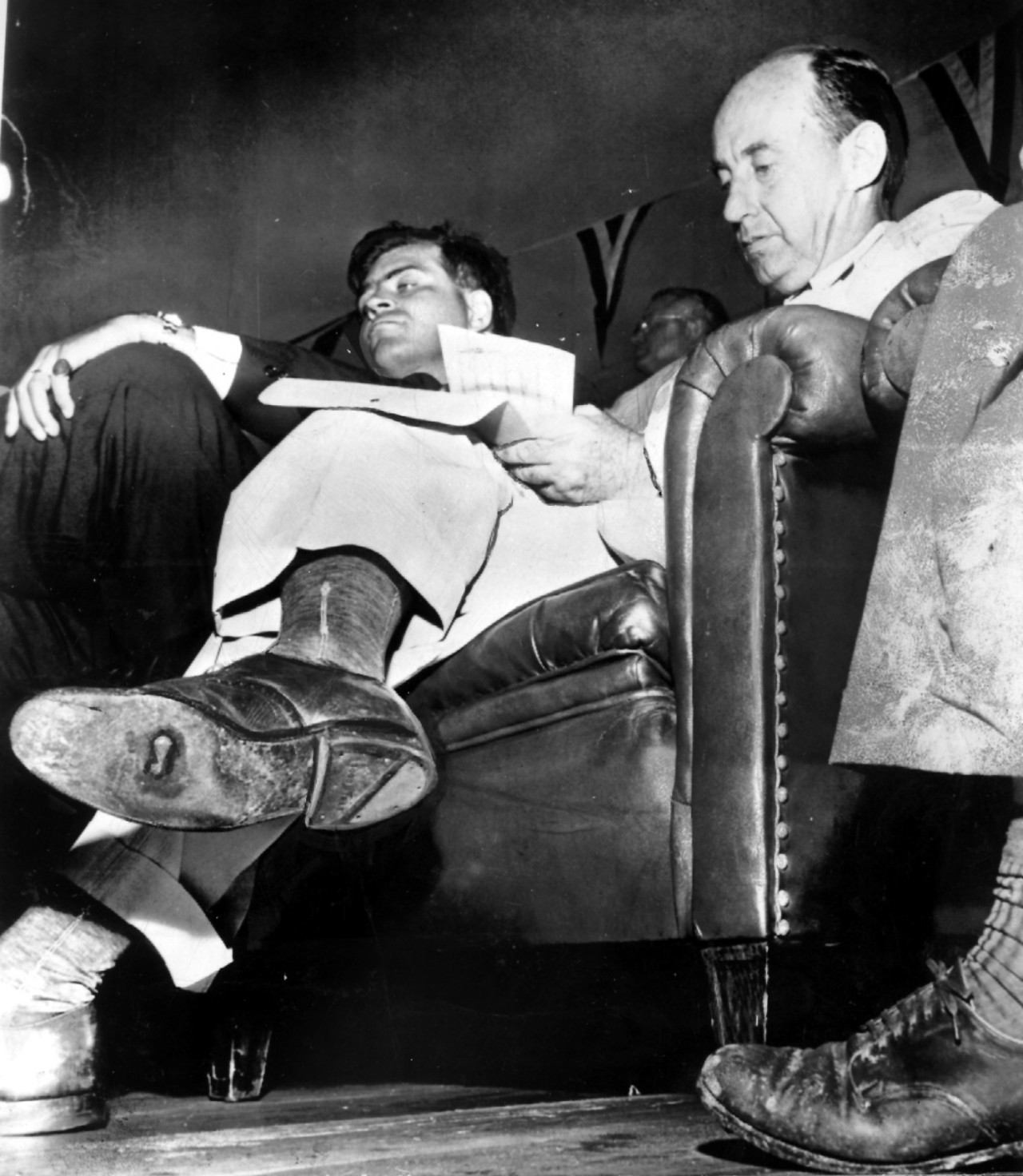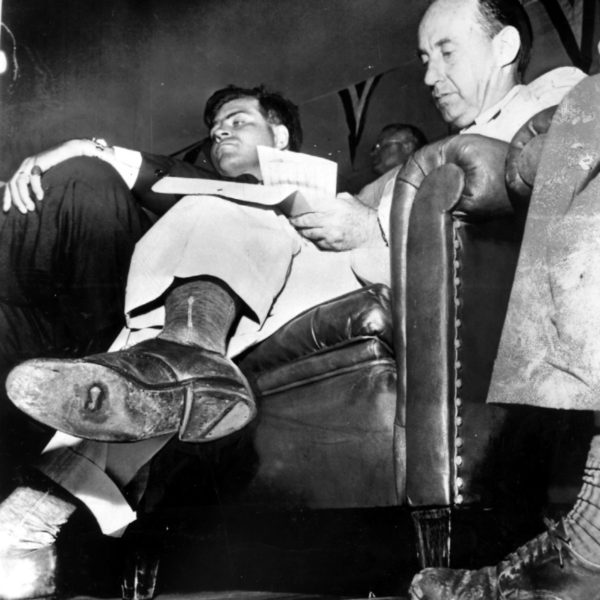
Paul Farhi in the Washington Post today talks the style of politicians: specifically the gloriously disheveled Jeremy Corbyn (leader of the UK Labour Party) and Bernie Sanders (candidate for U.S. president). Both men follow a tradition in politics of the anti-image: they look unkempt, untailored, unpressed; the implication being they have more important things to do than iron their shirts (or even button them properly). They don’t have the time or money for new tailored clothing or, say, a haircut.
The classic example is the famous 1952 photo above of Adlai Stevenson. An accidental capture of the bottom of Stevenson’s shoe revealed his sole was worn clean through—it helped cement his image as a man of the people rather than a well-to-do prep school and Princeton grad (he still lost the election).
Farhi questions the authenticity of this authenticity, and the gender and age issues at play:
Corbyn and Sanders violate the male politicians’ Uniform Code of Fashion because they can.
Their age and gender (and perhaps their race) give them cover to flout
expectations. Older men — Sanders is 74, Corbyn is 66 — get a pass
largely because we don’t place the same value on their physical being.That
gives them license to make these perceived anti-fashion statements —
which, of course, are read among their passionate supporters as evidence
of their political “authenticity.” It’s part of what makes them seem
different to the faithful, and therefore preferable. They’re the aging
college professors, too busy conjuring Big Ideas to care about such
trivialities as clothes and hair. They’re not, in a word, “slick.”Ask yourself this: Could Clinton or Carly Fiorina pull off a similar
look and be taken as seriously as Sanders? Could Jeb
Bush or Marco Rubio or Rick Santorum? If Bush or Rubio or, say, Democrat Martin O’Malley appeared in public
with his hair and clothes askew, he wouldn’t be called “authentic” or
“real” — he would be dismissed as disorganized.
–Pete
